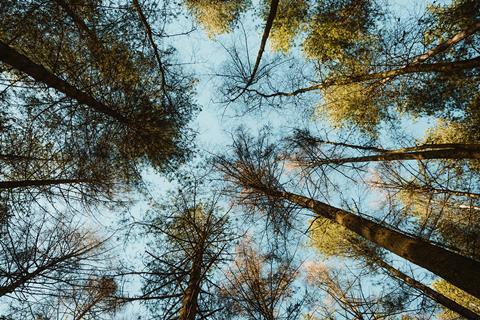Victoria Beech outlines all the blessings of exploring the natural world

Nature is the first cathedral
We’re currently in our second year of doing #1000hoursoutside.
For me the most important thing is not how we’re achieving that but why. We’re intentionally spending loads of time outside because it’s good for us and it gives us a way to regularly worship in the first cathedral.
Being outside often causes us to awe and wonder, which is a form of worship. But how is appreciating nature worship? How is nature the first cathedral?
One way to think about it is to compare God to an artist. To appreciate art is to appreciate the artist. When looking at the work of a painter, for me there’s always an element of how did they make this? What inspired this picture? Why did they put that detail in? What was their relationship to this person?
If you’ve ever been to an exhibition where the artist is there, you’ll see them silently watching everyone, taking in their responses to the art they have created. If you go and speak with them, there are usually two things they will express: firstly their feelings of anxiety at having everyone see their work – this is because art is always an expression of the artist, something of their inner being, their emotions, their experience of life put out there for everyone to see. It’s an incredibly vulnerable process to let others in that close to you. Secondly, they usually express great delight at seeing other people’s enjoyment of their work, seeing which people are drawn to which pieces, to hear what other people see and experience in their artwork. Each response is unique, and there’s a joy for an artist seeing the joy their work brings others.
I think this explains part of why appreciating nature is worship. If you believe God created the world, then all the amazing nature we observe is his ‘art’ or, as the old hymns put it, handiwork. As we observe, appreciate, learn more about and revel in nature, we are appreciating God and his character as expressed through nature. If we imagine God there with us, like an artist present at their exhibition, we can then chat with God about his art, expressing our delight, our wonder, our awe at the intricate details, the interwoven systems, the beauty. And we can also bring our questions and concerns, our fears and our sadness. There’s so much that is worship in our consciously being in nature with God.
And then there’s the way that when we’ve experienced awesome nature, we have an inescapable urge to share about it with others! Remember all the Facebook posts of snow or pictures of sunsets or the moon? I intentionally ‘like’ all those sorts of pictures as I want my feed to be full of beautiful nature pictures, as it helps me to appreciate nature even when I’m not out in it! In a frenzy of doom scrolling it’s great to have an opportunity to again appreciate the grandeur of God’s creation. I purposefully follow people in Instagram who share amazing nature photos as well as interesting info about them. My two current favourites are @leifbersweden and @lucylapwing (who is also on Spring Watch), but you might also enjoy David Attenborough’s account on Facebook or other naturalists who spark your fancy.
So how can we intentionally engage in this natural awe and wonder, using our appreciation of nature as worship? Here are a few ideas:
1. Get outside every day and pause somewhere near nature and notice something new. Whether it’s a park or just a flower in a crack in a wall, there’s always something to see once you get your eyes tuned in.
2. Build in a few extra minutes to get places when you are walking to allow time to notice nature on the way. Stop on your way home in the evening to look at the moon or stars.
3. Download one or two apps to help you identify nature while you’re out – we love Birdnet on which you record birdsong and it will help you identify it. Alternatively, get some small ID books you can take out with you. We love the Collins Gem series like this one on birds.
4. Buy a sturdy magnifying glass and take it out for a walk. See what tiny things you can see with it.
5. Train yourself to see better using these three prompts from John Muirs Law:
I notice… Say what you see out loud, describe it in detail as if to someone who can’t see it.
I wonder… Say your questions about it out loud, maybe linked with what you saw or not.
It reminds me of… Go crazy – name everything – doing this with children is great fun!
6. Get a little notebook and use it as a nature journal, doing a two-minute sketch of something lovely you notice as you are out. Sketching helps us slow down and notice details. It’s amazing what you’ll notice when you start drawing it! (See John Muirs Laws’ website for loads of excellent ideas on nature journalling. You could start by recording what you noticed, wondered and were reminded of.)
6. Listen to a nature podcast. I love Lia Leendertz’s As the Year Turns which has a 30-minute episode release on the first day of each month with loads of interesting nature information read by Lisa in her super relaxing voice. We also love her book, The Almanac, a seasonal guide to 2022, which has pictures and more info.
7. Find a things-to-spot chart and use it when going on a family walk or even on your way to school. Here’s the RSPB list of things to spot in April. And a more generic 100 things to spot on a nature walk.
8. Sign up to the RSPB or your local Wildlife Trust. As well as their sites being great places to walk in nature, they can also send you emails to help you discover more about what’s happening in nature this month.
9. Discover more ways to worship in nature by looking at Muddy Church website where you’ll find loads of free resources, including trails and ideas for outdoor activities. Do take a look!































